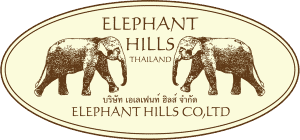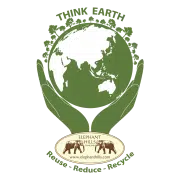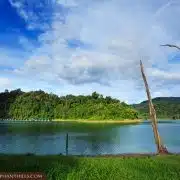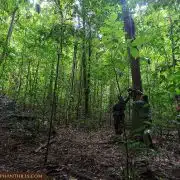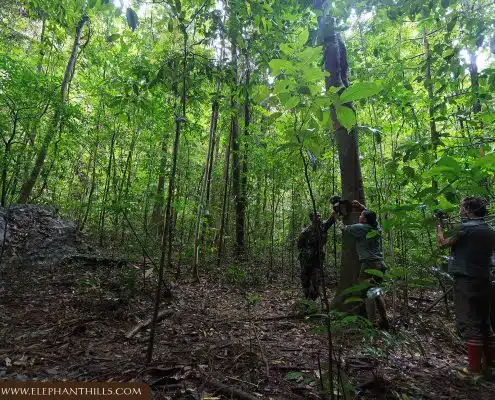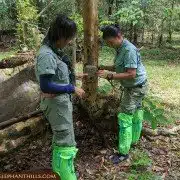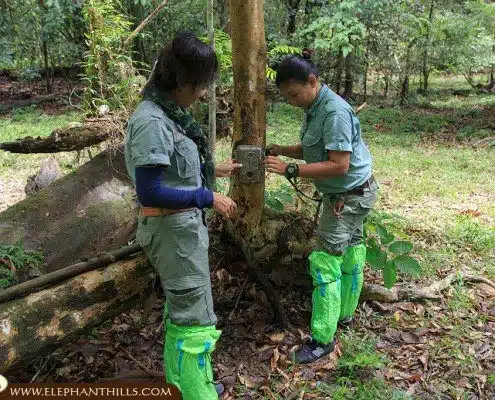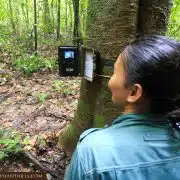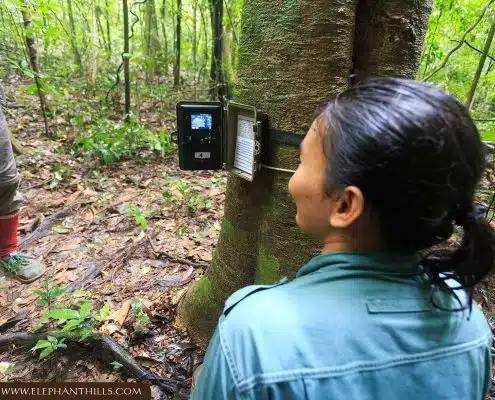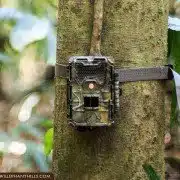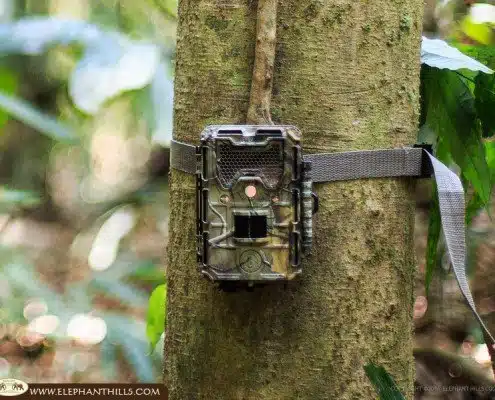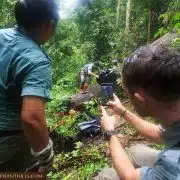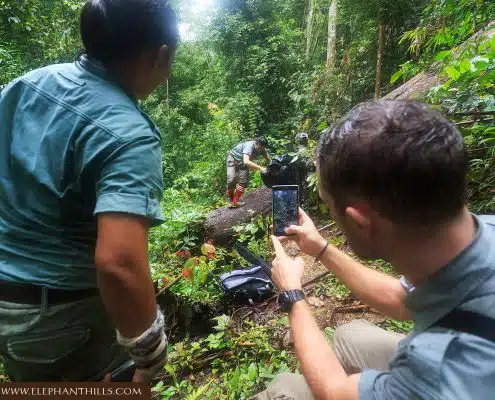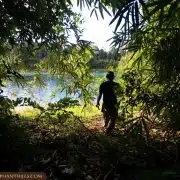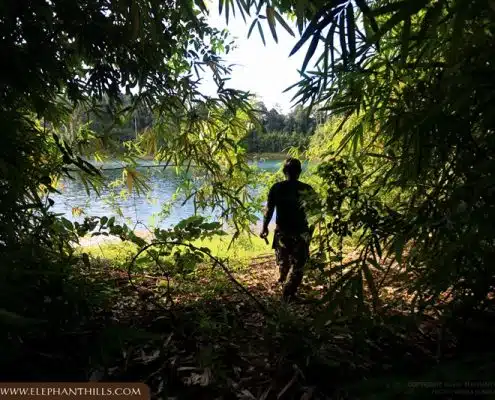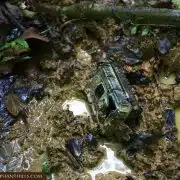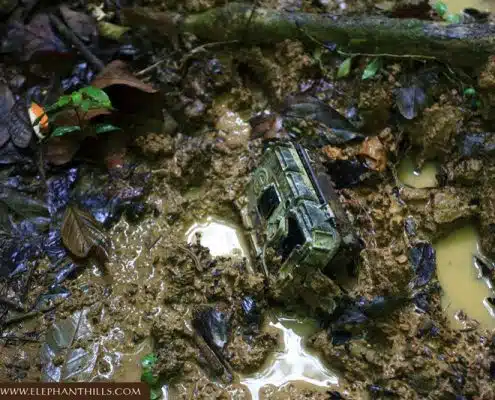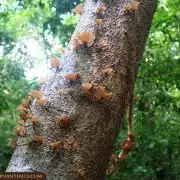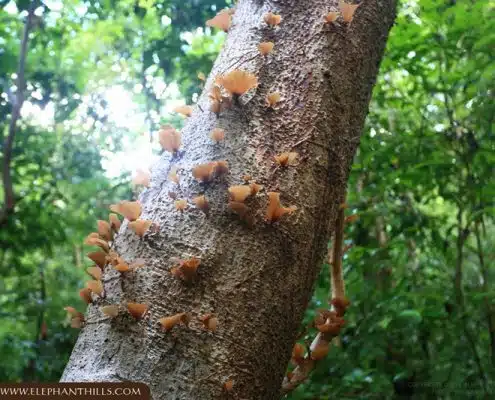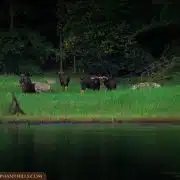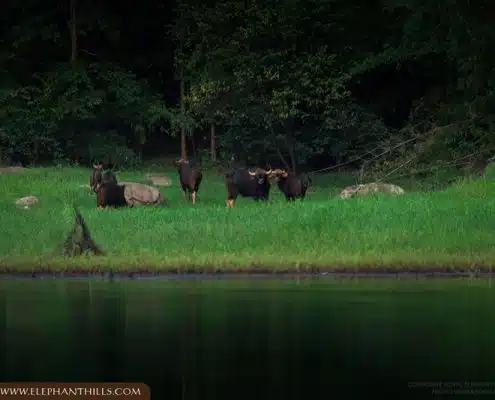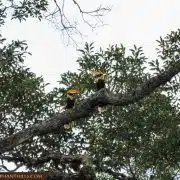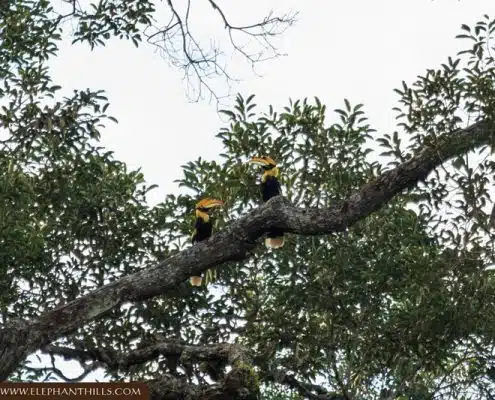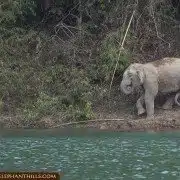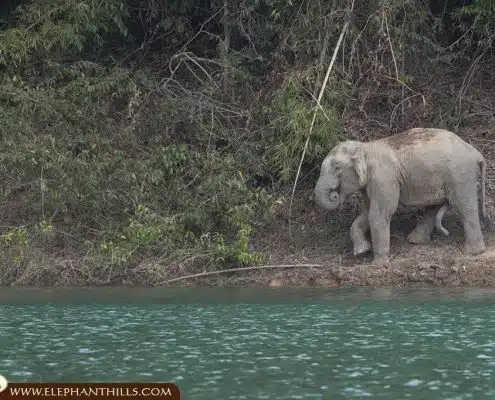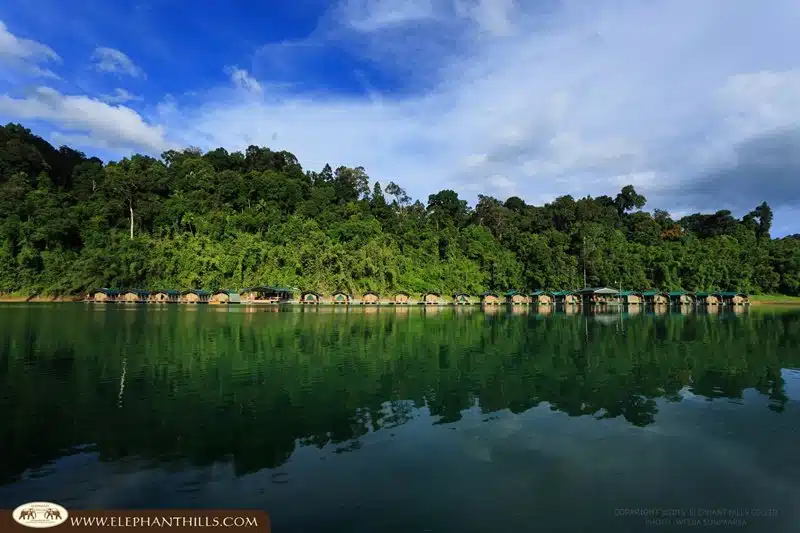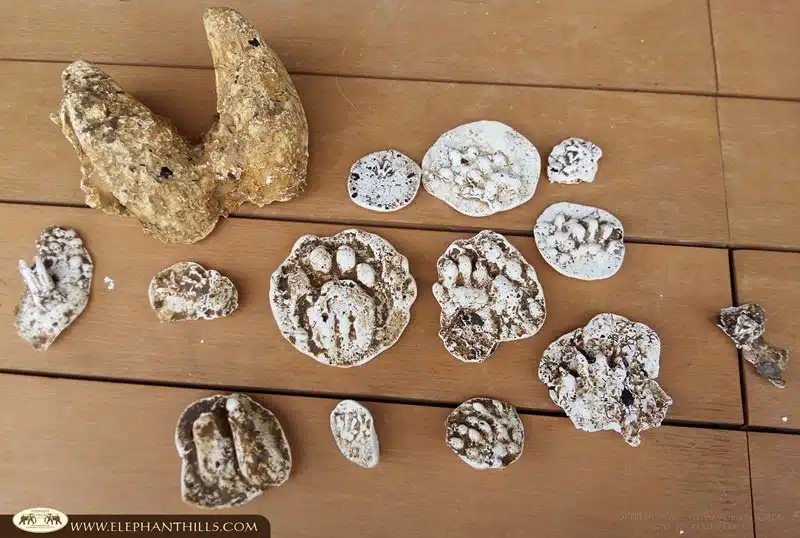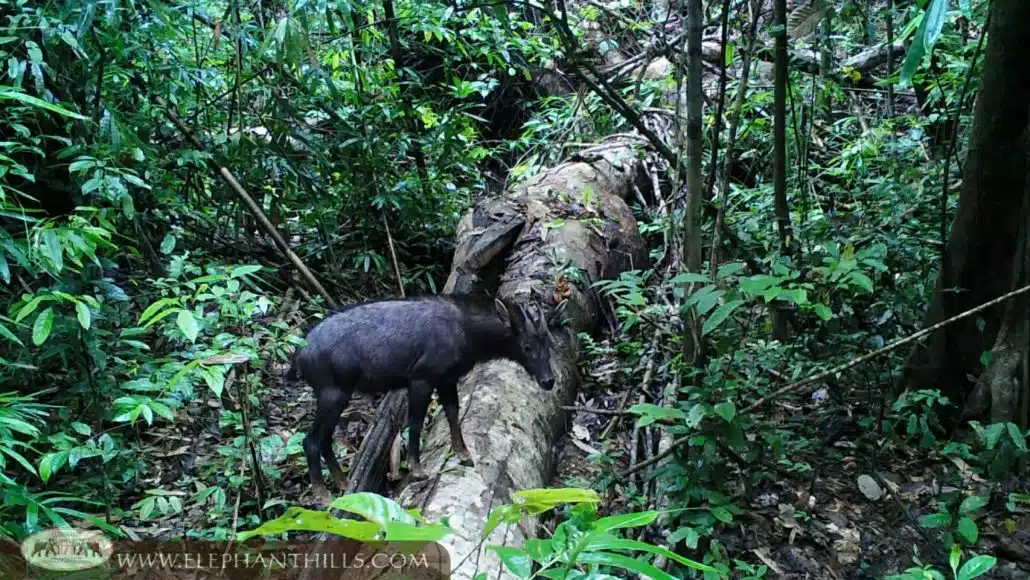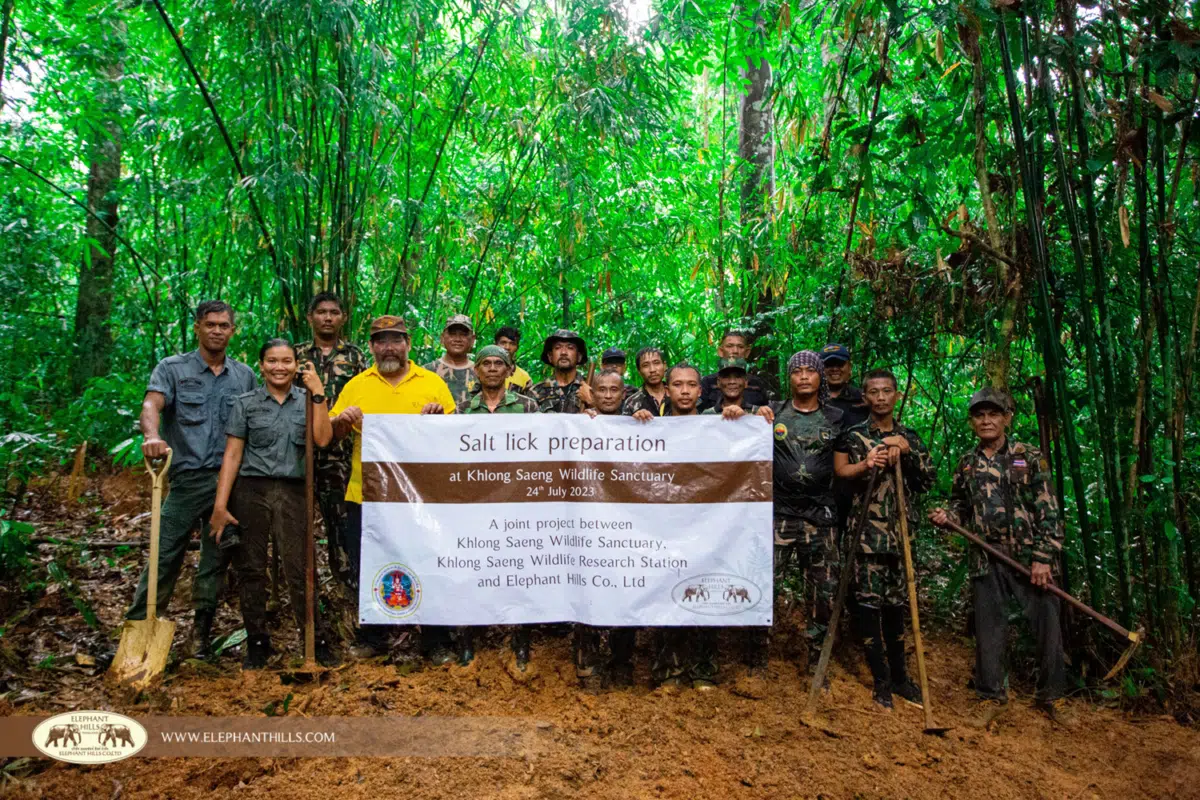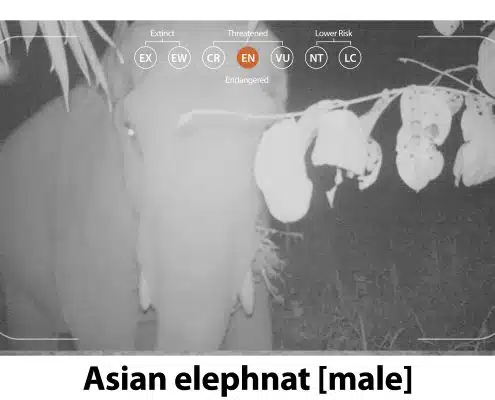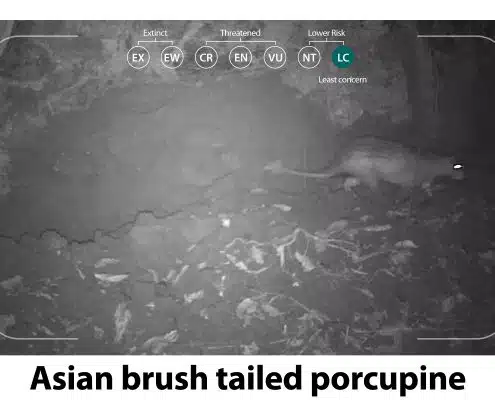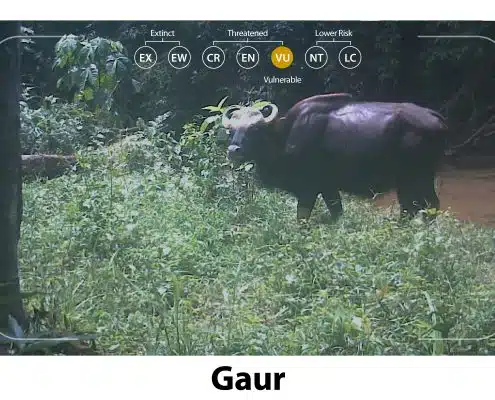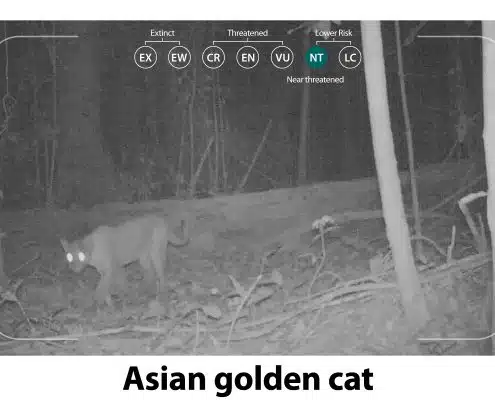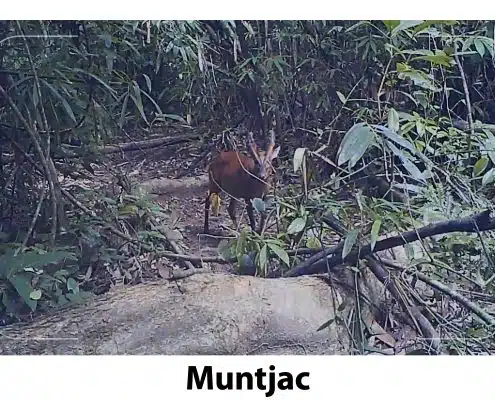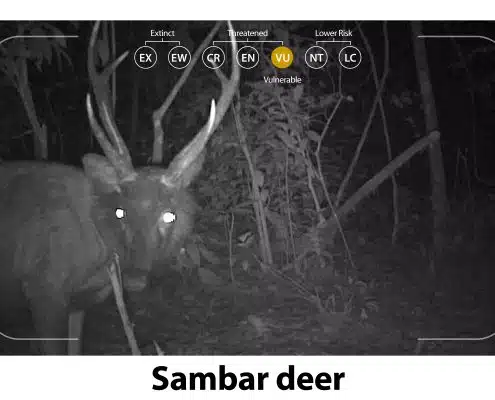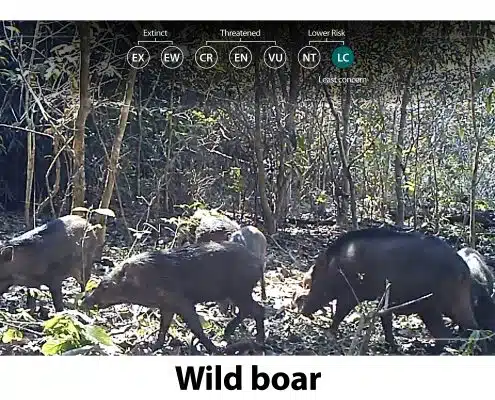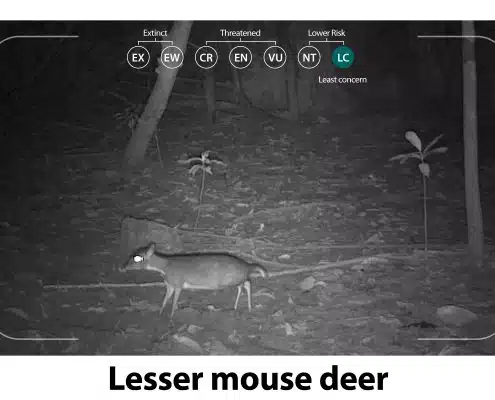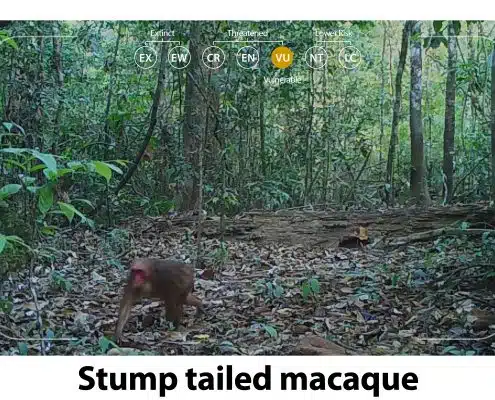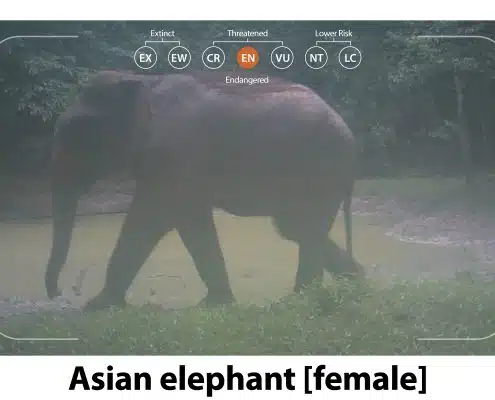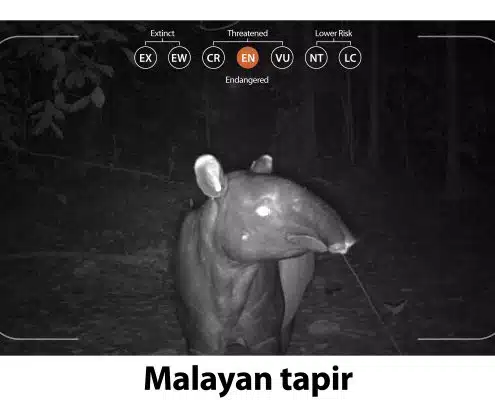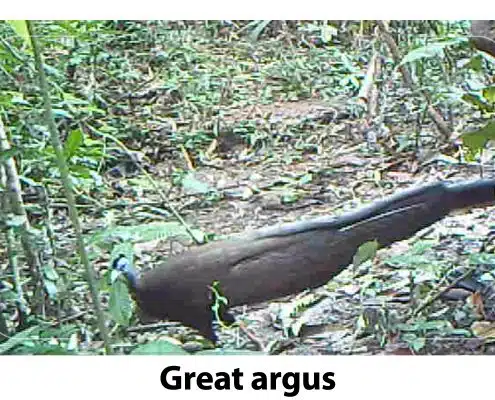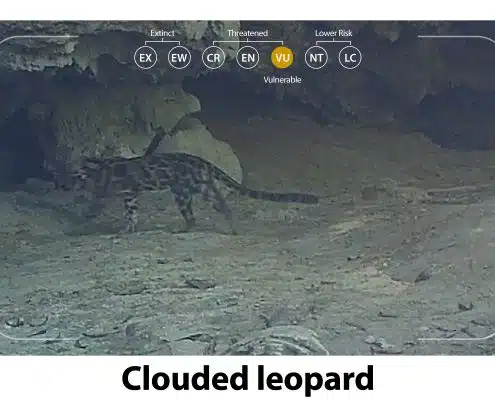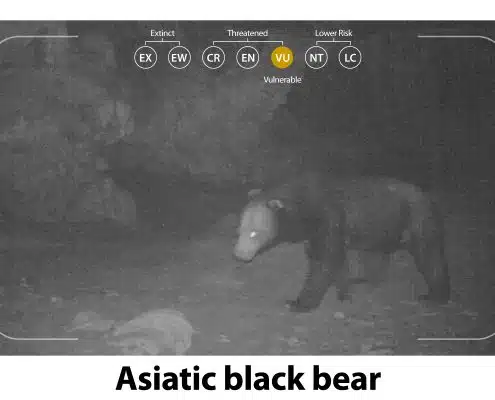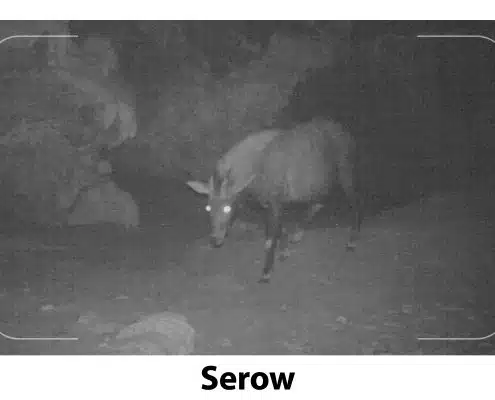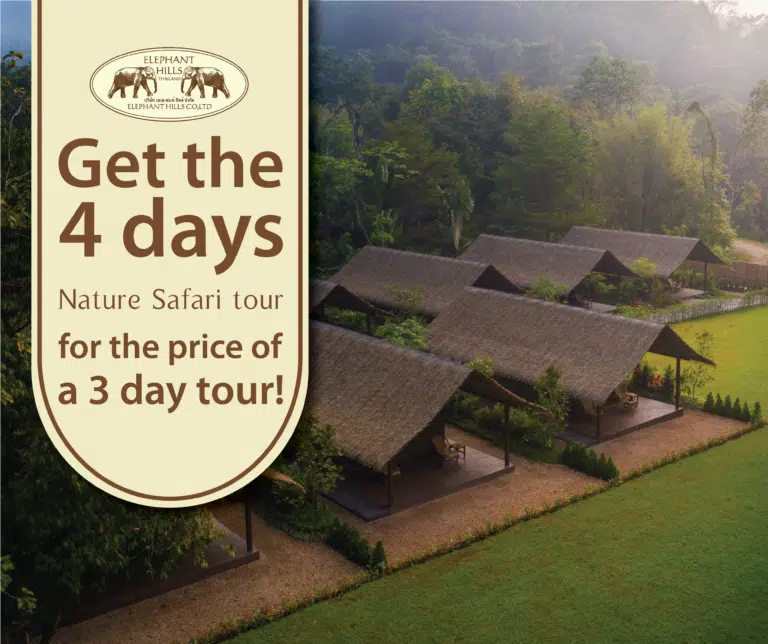Wildlife monitoring using camera traps
We started our Wildlife Monitoring Project in 2011, shortly after opening our Lake Camp at Cheow Larn Lake, one of the most unique and pristine locations and nature vacation destinations in the world. We were eager to find out what kinds of wildlife roam in the evergreen forests of Khao Sok National Park, and the remote channels of the lake have been ideal for capturing the movements of various species with our motion triggered cameras hidden in the jungle.
Research focuses on the Bang Chong area, part of the Khlong Saeng Wildlife Sanctuary, adjacent to Khao Sok National Park, and results were immediately amazing. Would you have known that lots of threatened and even as endangered classified species like wild Asian Elephants, Malayan Sun Bears, Gaurs, Asiatic Black Bears, Clouded Leopards, Malayan Tapirs or Asian Golden Cats live in close proximity to our luxury tent floating camp?
Working together with local Wildlife Sanctuary and Research Station
Since the beginning of the project, we have been working in close co-operation with Khlong Saeng Wildlife Sanctuary, Khlong Saeng Wildlife Research Station and Khao Sok National Park authorities. We report regularly of our findings and share our camera trap footage with them. We also do our best to help them out with their projects, as we believe that the more information we can gather from this special area, the more tools and knowledge we have for conserving it.
These days, we collect our camera footage every other month, take notes on the nature park treks and try to evaluate migration patterns, reproduction probability and overall gain a better insight into the diverse fauna Khao Sok has to offer. We discuss the species we encounter on the footage regularly with the local Research Station which helps us get more information to share with our nature enthusiast guests as well. Our guides receive regular training on Khao Sok wildlife and bird watching, and the Research Station has helped with this immensely.
We help sponsoring projects that benefit not only the research but also the conservation and wellbeing of the local wildlife. Within our Wildlife Monitoring Project we have donated camera traps to the local Wildlife Sanctuary and durable metal cases to help to protect the camera traps of the Klong Saeng Wildlife Research Station. On the most recent project we prepared four salt licks in the forest to aid wild elephants and other animals with mineral supplementation.
Become a partner
We are currently looking for partners to co-operate with our Wildlife Monitoring Project through corporate sponsorship. Would you like to donate a camera trap for recording the amazing wildlife in one of the world’s oldest rainforests? We and our nature-loving followers would definitely be thrilled to see the footage!
By gathering information on the flora and fauna in Khao Sok, we believe we can help the National Parks and Wildlife Sanctuaries with their continuous efforts on preserving this unique area.
Please contact us at [email protected] to discuss the options.
Got curious already? We have gathered our best camera trap videos here
Spring
Monsoon springs into action
April is Thailand’s hottest and driest month; dam water level reaches its lowest point. In May and June, the monsoon returns, temperatures cool down slightly and rain starts falling again. Conditions and experiences vary a lot in this time, making it a unique vacation destination.
In April grounds are dry, footprints very hard to find, paths covered with jungle debris. Wildlife hide and tend to seek shade, but can occasionally be spotted near water holes or at the lake’s banks throughout the nature park.
May and June bring heavy rain falls in Khao Sok national park, making the longer jungle park treks hard and the leeches active deep in the jungle. Conditions for our Wildlife Monitoring Project team can be rather challenging; muddy, slippery trails, paired with impaired visibility and little chances of hearing anything, chances of surprise encounters with wildlife rise to an almost uncomfortable level.
But it is also the time when babies are born, and that makes up for any risk we take.
Summer
Wet and Wild
The ground is rain-sodden and muddy. In the middle of monsoon season this does not come as surprise. However, this is still one of our favorite periods due to the amazing greenery we are constantly surrounded by in Khao Sok national park. The numerous shades of green and the amazingly fresh air after a good downpour easily make up for the wet conditions of the stunning elephant jungle sanctuary.
It usually is a tough walk on the wet, slippery ground. Fallen over trees do not simplify the trek, neither do those armies of leeches we encounter on our walks deeper into the jungle. Heavy rains prevent wildlife from smelling or hearing us coming closer, which could lead to potentially dangerous encounters.
But it is worth it. Wildlife is a lot livelier during monsoon. We often spot Lar Gibbons and Spectacled Langurs, as well as dozens of footprints – some of them only a few minutes old, as otherwise the rains would have washed them away: Elephants, gaurs, wild boars, serows and deer must have crossed our paths literally just before we arrived. Most amazing: This is also the main offspring-raising season! Lots of baby dung and baby footprints ornament the path.
Autumn
Farewell monsoon
Autumn marks the end of the monsoon season. It still rains, but you also do get glimpses of sunshine quite regularly. Usually an excellent time for both trekking and wildlife spotting.
Footprints are everywhere: Boar, deer, gaurs, elephants… and many of them often on tour with babies. On drier days, animals often make use of the mud and water holes; it can get quite busy around there. Nonetheless, most of the times they still manage to hide away just as we approach.
Still, we have to be super careful. Parents are still highly alarmed protecting their young, and weather conditions often make it difficult to oversee all surroundings. Generally, animals are easily irritated in this season – it is the time with our highest loss of camera traps, falling victim to inquisitive elephants.
Winter
Welcome to Khao Sok, sunshine!
Winter is Khao Sok’s driest season. Days are often super sunny, and it is not too hot yet. Conditions are excellent for exploration excursions.
However, wildlife rather hides, and footprints are harder to depict due to the ground being dry, and leaves and branches covering the paths.
Especially around water holes there now is an increased activity. Footprints include elephants, gaurs, boars and deer. A rare encounter includes seeing a roughneck monitor lizard. And the cameras keep filming them all, plus serows and tapirs. Best places to film are a salt lick and a cave entrance. Cats and bears seem to be a little less active during these months. Hibernation in the tropics?
As water gets less, and even the water level of Cheow Larn Lake falls, more and more animals appear on the lake banks to drink, and can often been seen with bare eyes from a canoe.
One very memorable trip included an almost encounter with a wild elephant herd – we had to sprint up a hill and duck for cover, to then see shaking trees and breaking bamboos where we had just been about a minute ago.
